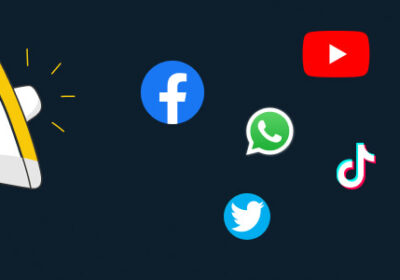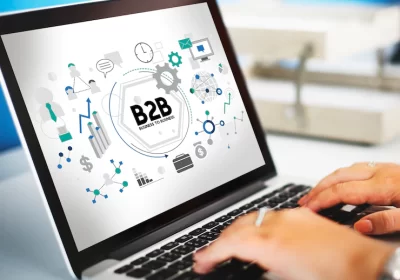What Is Experiential Marketing? Explained With Examples
Experiential marketing is completely different from traditional marketing. This type of marketing brings brands and the target audience face-to-face with each other. It involves building a good customer experience and helps raise better brand awareness.
This helps create a good, memorable experience with the customers, increasing their loyalty to the business and its products. Customers get a different experience of talking to the brand, which is impossible with traditional marketing.
So, if you are looking for a very simplified definition and examples of experiential marketing, then this article might be helpful.
What Is Experiential Marketing
Experiential marketing is an interactive marketing method involving the target customer and the brand in a one-on-one conversation with the brand. This facilitates better brand awareness and increased brand loyalty. Such marketing also helps brands understand the customers’ insights.
However, brands need to keep their goals, metrics, and strategy sound before starting an experiential marketing campaign. Some examples of experiential marketing include sharings samplings, shows, in-store activities, events, and product showcases, helping brands interact with the customers
We can break the main components of experiential marketing down into different points.
- This marketing method directly involves marketers, targets customers face-to-face, and creates a participator experience.
- Businesses and brands offering alternative marketing methods can attract prospects more and make them feel more connected to each other.
- Businesses can create a better brand identity and loyal base of customers through this marketing method.
Why Is Experiential Marketing Effective?
Different reasons make this type of marketing one of the most effective ones in the industry. Here are some reasons why this marketing is effective. You can also find some examples of experiential marketing here.
- This type of marketing emotionally connects the audience with the business. This emotional connection changes the way the leads see a business, boosting the brand awareness of the business for the better.
- Businesses can create a better image of themselves in the minds of the customers and gain their loyalty.
- Experiential marketing offers valuable insight into the customer’s needs and priorities. Businesses can understand the target customers better through this type of marketing.
- Brands are seen as more than businesses running ad campaigns. The impression made by the brands lasts a long.
Different Types of Experiential Marketing
There are different types of experiential marketing. The four main types include –
Guerrilla Marketing:
It is heavily reliant on traditional marketing methods, including things like interactive emotions, surprises, provocativeness, and risk.
Brand Activation:
Brand activation involves an event or any similar mode of conversation to encourage the customers.
Event Marketing:
The display of products, themes, and presentations are parts of event marketing that create an unforgettable memory.
Retail Installation:
It is a method of smart placement of products in a retail store aiming for its promotions.
How To Strategize Experiential Marketing?

You need a proper plan to strategize your marketing campaigns. Here are some steps to help you strategize your experiential marketing.
The Planning Stage
Your marketing team should have ample time to research and gain knowledge about the target audience. But, the first target would be to find out who the target audience is. They have to find out the type of marketing that is most comfortable and compatible with the target audience. Understanding the interests, needs, and preferences of marketers is a good step to start with.
Create A Clear Message
The message of your marketing campaign should align with the goal of your brand. That is why creating a clear message for the campaign is necessary. The campaign should be able to build a strong association with the clients.
Set Up And Interactive Campaign
Capable experiential marketing should be able to provide value and benefits to the target audience. It should be able to provide a memorable experience and educate the audience. You can choose from any type of methods explained before and set up a face-to-face event with the target audience.
Integrate Augmented Reality
You can try your glasses on virtually through augmented reality technology on Lenskart. These types of features create a good experience for the audience, also helping them find the product that is a perfect fit. Augmented reality can be an important part of experiential marketing.
Use Multiple Channels To Endorse Your Campaign
We know how important brand exposure and engagement are. You should take your campaign across different marketing channels to grow the number of your audience and customers. Of course, you should follow the channel where most of your audiences are available. However relying on multiple channels will increase brand exposure.
Experiential Marketing Examples
Some interesting examples can be found if you look for experiential marketing campaign examples. Here is an example that might shock you –
Red Bull: Stratos Jump
Red Bull created a world record with a famous skydiver named Felix Baumgartner in 2012. This is probably the ultimate height of experiential marketing. Felix, a skydiver from Austria, was taken to the stratosphere, where he would jump from. Red Bull partnered with Felix in this great adventure, where Felix jumped from 128000 ft (24 miles above the space Earth. This was a world record, both for Felix and for Red Bull.
Sleepover At IKEA! Experiential Marketing At Its Best
IKEA is popular for the unique and exciting in-store experiences that they provide. There is literally not one human being that hasn’t got lost while exploring the beautifully crafted maze of home goods, furniture, and replica rooms.
Previously, in the year 2011, they grabbed the concept of experiential retailing to a completely different level by arranging a sleepover at their Essex, UK store for one hundred lucky customers. The plan was a brilliant example of a brand making use of social media to listen to their customers, which originated from a Facebook group titled ‘I wanna have a sleepover in IKEA.’
From among 100,000 people who had participated, the furniture brand casually selected 100 lucky winners – giving them a memorable, totally unique, and lifetime experience at completely zero cost.
As the pioneer of the enthralling in-store experience, IKEA has long been the most popular flagbearer of retailing innovation. Their in-store sleepover plan is the ultimate example that they have set out there for other brands to understand what the succession of retail marketing would look like.
The Result
IKEA promoted their entire Essex sleepover by running a completely unified campaign before and after the event. The core element of the campaign was the videos that showed the unique experience across all social media platforms. The Facebook campaign in itself had reached 23,000 people beyond the original 100,000 people that initially started the group. If that was not enough, the campaign bagged more than 300 editorial pieces. If that is not a storm of free publicity, I don’t know what is.
In an intelligent touch, IKEA also hired a sleep expert who could offer tips on how to get satisfying sleep. This was not only effective in creating an optimistic image in the minds of the customers for the brand for providing them with so much information for free but also puts IKEA in the prior position whenever they think of buying anything related to their homes.
IKEA has since conducted sleepovers in multiple locations all across the UK, US, Sweden, Canada, and Australia. Consumers have gone crazy for that one chance to win an overnight stay at the furniture store.
Overall, this is one of my favorite experiential marketing experiences– and definitely one that has proved to be very successful for IKEA. It’s an incredibly intelligent experiential marketing plan that absorbs consumers into their unique experience of the brand and its products while getting the perfect press coverage for the brand globally.
Frequently Asked Questions [FAQs]:
Here are some popular questions and answers about this type of marketing –
Ans: The goal of experiential marketing is to create a memorable connection between the customers and the brand. It also helps generate customers’ loyalty to the brand and influences the decision to purchase.
Ans: These are the pillars of experiential marketing –
1. Exceptional
2. Relatable
3. Relevant
4. Memorable
5. Targetable
6. Shareable
7. Personal
8. Connectable
9. Adaptable
10. Engagement-worthy
11. And credible marketing strategies.
Ans: Experiential marketing methods can turn 70% of target audiences into repeat customers once they attend the events. A massive 85% of the customers have shared their will to buy after attending an experiential event.
The End
Experiential marketing has helped many businesses generate customer loyalty and build brand awareness. It affects customer retention and builds more trust in the audience. Most businesses should adopt this approach at a point in time their business.
The different information I have shared through this article should be helpful to most brands. If you found this article helpful, please let us know in the comments. You can also take your valuable questions to the comment. We will be sure to reply.
Read More:



